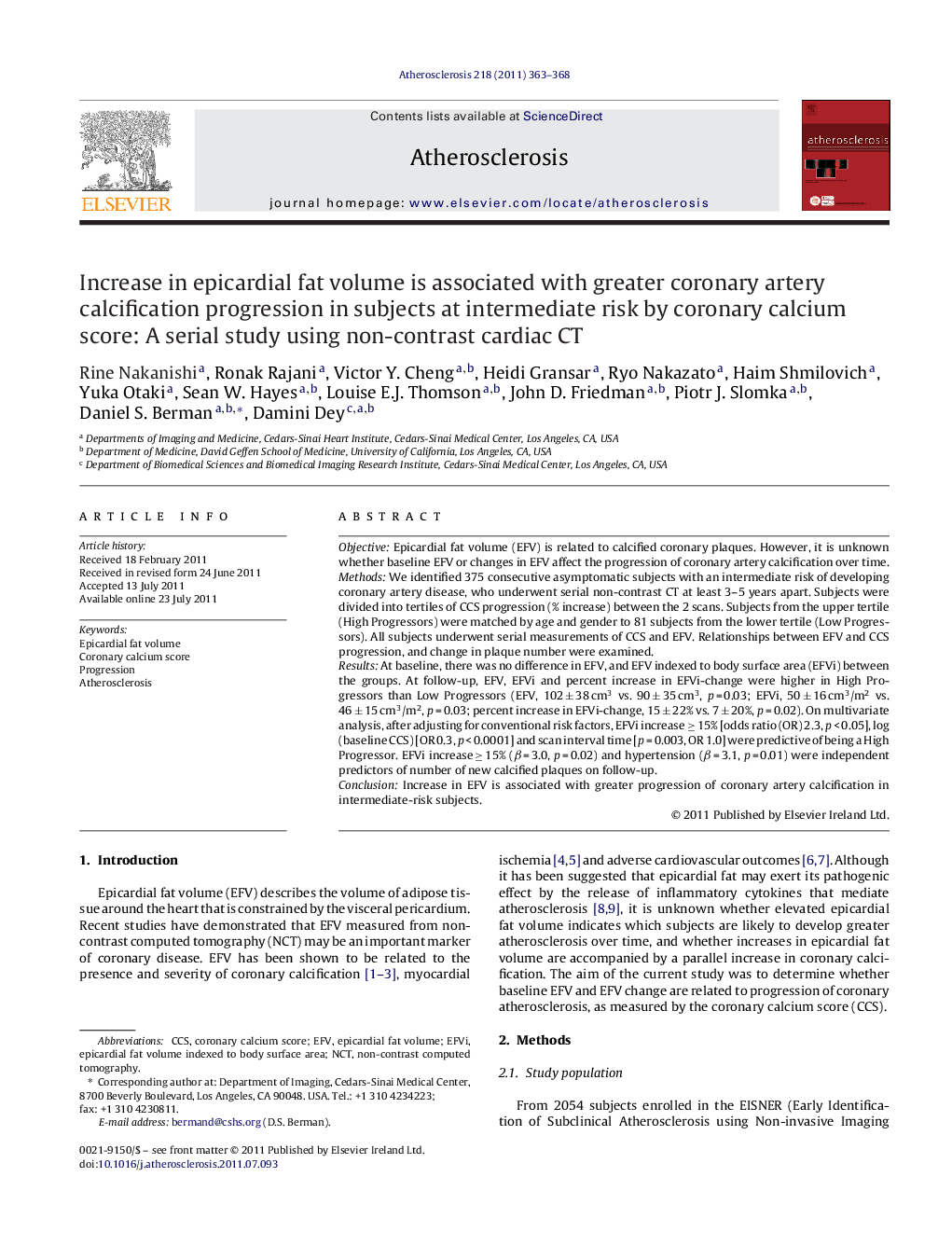| Article ID | Journal | Published Year | Pages | File Type |
|---|---|---|---|---|
| 5950067 | Atherosclerosis | 2011 | 6 Pages |
ObjectiveEpicardial fat volume (EFV) is related to calcified coronary plaques. However, it is unknown whether baseline EFV or changes in EFV affect the progression of coronary artery calcification over time.MethodsWe identified 375 consecutive asymptomatic subjects with an intermediate risk of developing coronary artery disease, who underwent serial non-contrast CT at least 3-5 years apart. Subjects were divided into tertiles of CCS progression (% increase) between the 2 scans. Subjects from the upper tertile (High Progressors) were matched by age and gender to 81 subjects from the lower tertile (Low Progressors). All subjects underwent serial measurements of CCS and EFV. Relationships between EFV and CCS progression, and change in plaque number were examined.ResultsAt baseline, there was no difference in EFV, and EFV indexed to body surface area (EFVi) between the groups. At follow-up, EFV, EFVi and percent increase in EFVi-change were higher in High Progressors than Low Progressors (EFV, 102 ± 38 cm3 vs. 90 ± 35 cm3, p = 0.03; EFVi, 50 ± 16 cm3/m2 vs. 46 ± 15 cm3/m2, p = 0.03; percent increase in EFVi-change, 15 ± 22% vs. 7 ± 20%, p = 0.02). On multivariate analysis, after adjusting for conventional risk factors, EFVi increase â¥Â 15% [odds ratio (OR) 2.3, p < 0.05], log (baseline CCS) [OR 0.3, p < 0.0001] and scan interval time [p = 0.003, OR 1.0] were predictive of being a High Progressor. EFVi increase â¥Â 15% (β = 3.0, p = 0.02) and hypertension (β = 3.1, p = 0.01) were independent predictors of number of new calcified plaques on follow-up.ConclusionIncrease in EFV is associated with greater progression of coronary artery calcification in intermediate-risk subjects.
